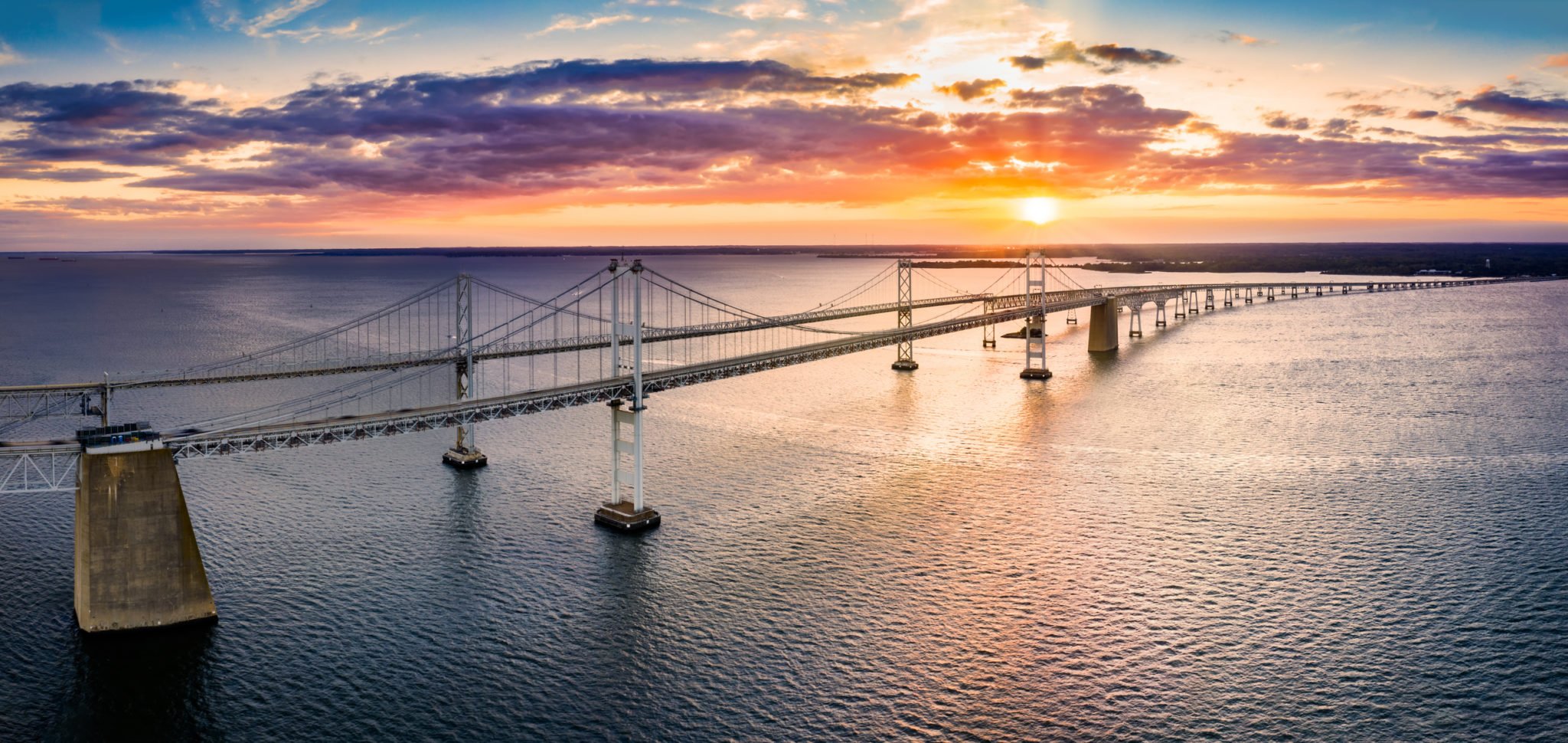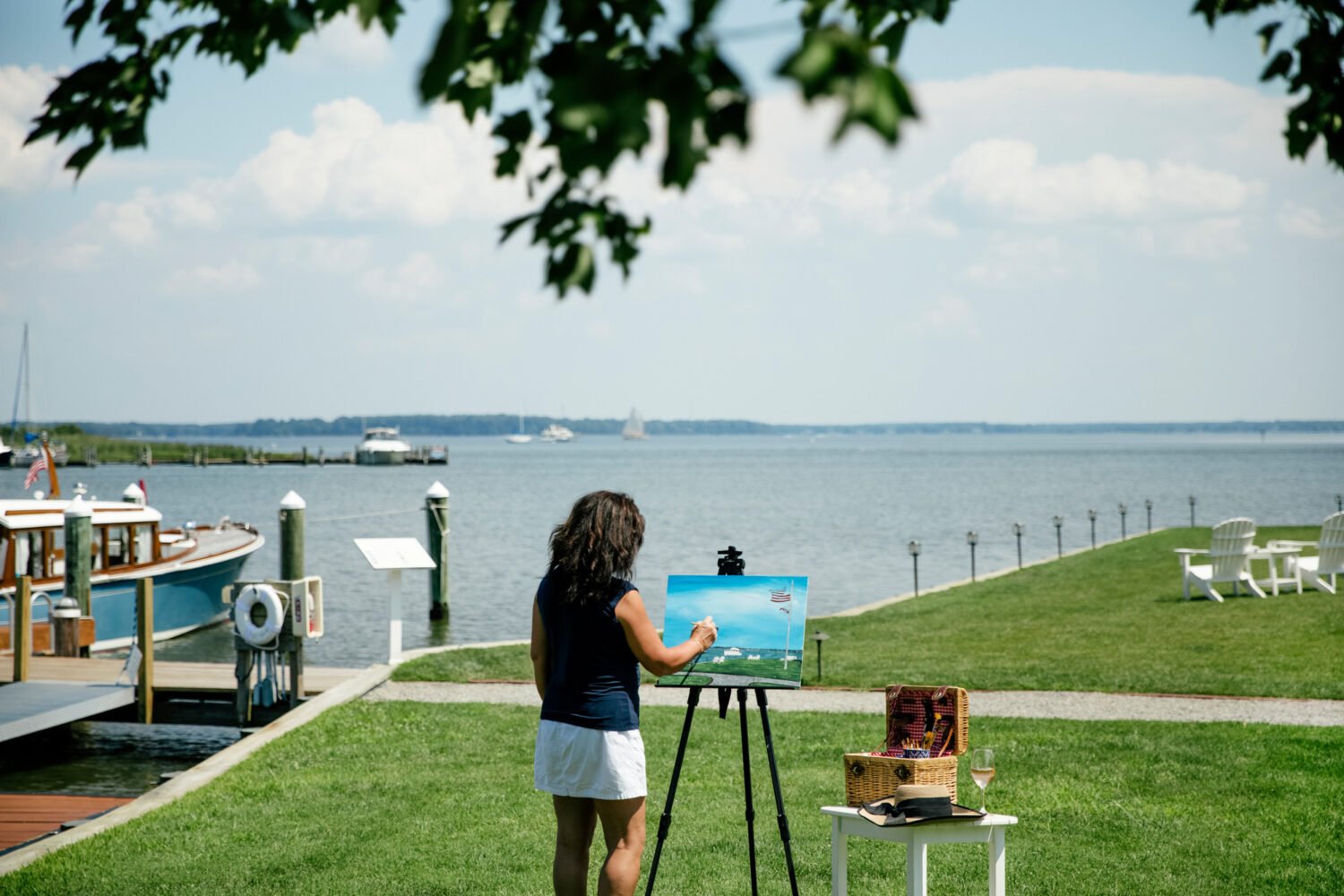When members of the Chesapeake Conservancy visited California’s Golden Gate National Recreation Area three years ago, the conservation group developed a grand vision for the Chesapeake Bay: the Chesapeake National Recreation Area, or CNRA. “That was the lightbulb moment,” says Reed Perry, external affairs manager for the Chesapeake Conservancy. “We said, ‘We can do this exactly in the Chesapeake Bay. They have a bridge, we have two bridges! They have a bay, we have a bay! They have lots of different parks that are all united—we can do the same thing with the CNRA.’”
Advocates including community leaders, conservation nonprofits, and lawmakers are pushing to make the larger Chesapeake Bay area part of the National Park Service as a recognized national recreation area.
The Chesapeake National Recreation Area would be a land-based park, meaning that multiple sites throughout the Chesapeake Bay, like Fort Monroe National Monument in Hampton, Virginia, and Sandy Point State Park in Annapolis would be formally connected under the name. These sites would give visitors on-shore access points to the bay’s waters. New park areas could be developed as well.
The designation of the Chesapeake Bay as a national park would come with national recognition and resources. Perry said he imagines building visitor centers to help educate and connect visitors with national park rangers and water activities, like exploring the bay by boat. It could boost tourism and support economies in local communities, he said.
“This vision would allow us to connect lots of parks that already exist to create a very coordinated, national park-worthy visitor experience,” Perry said. “There’s no real connection to sites today.”
In addition, Perry hopes the recognition would help the public connect with the area’s history.
“This is an opportunity to really update the storytelling around the Bay,” Reed said. “Indigenous history and African American history is really important in the Chesapeake Bay region, and there are a lot of sites and places and stories that need to be told that haven’t been.”
A national recreation area is different from a national park. Managed by the Park Service or the US Forest Service, they provide access to historic large reservoirs and emphasize water-based activities like boating and fishing. The Chesapeake National Recreation Area would join 12 other national recreation areas, like the Golden Gate National Recreation Area and Lake Mead.
The vision to make the Chesapeake some form of public land isn’t new. Propelled by new science about the ecosystem’s pollution, the idea for a permanent National Park Service presence began floating around in the 1960s, Perry said. The Park Service finally became involved 20 years later when it recognized the degradation of the bay’s habitats and wildlife. The signing of the Chesapeake Bay Agreement brought together the Environmental Protection Agency, Maryland, Pennsylvania, Virginia, and DC to take action. In 1986, the Capital Gazette published an editorial that supported the idea.
Ten years ago, the Chesapeake Conservancy formed to protect the bay and ensure that people have access to it to be able to connect with its history, culture, and natural resources. In 2021, Senator Chris Van Hollen and Congressman John Sarbanes formally announced a working group composed of stakeholders from around the bay to write and finalize a draft bill to make the Chesapeake National Recreation Area designation official. Perry says the conservancy hopes legislation is drafted by the end of the year, and that the bill will pass into law by December 2022. A coalition of more than 100 community and organization leaders from Maryland and Virginia, formed by the conservancy, is ready to advocate for the bill once it is introduced.
“Our national parks represent America’s treasured landscapes and sites,” Perry says. The bay, he says, “is absolutely worthy of that recognition.”

















